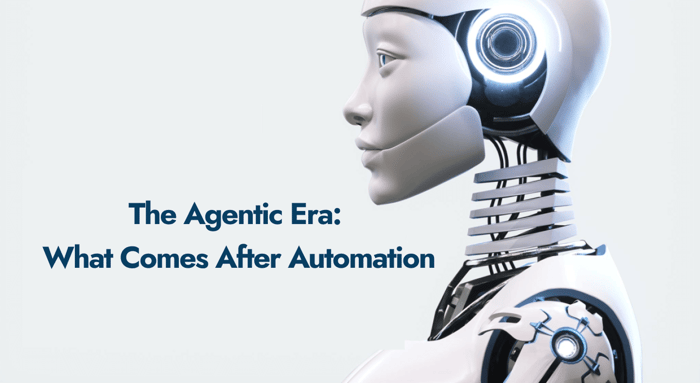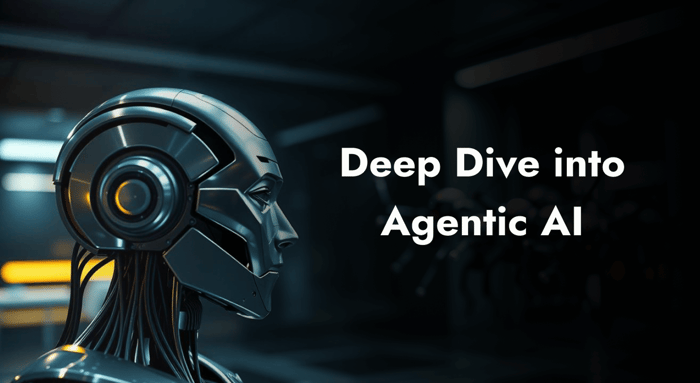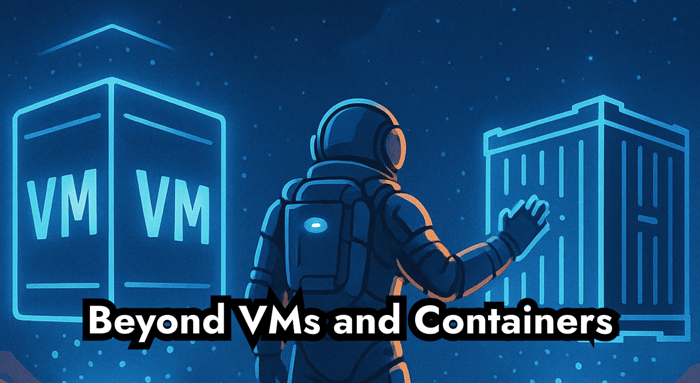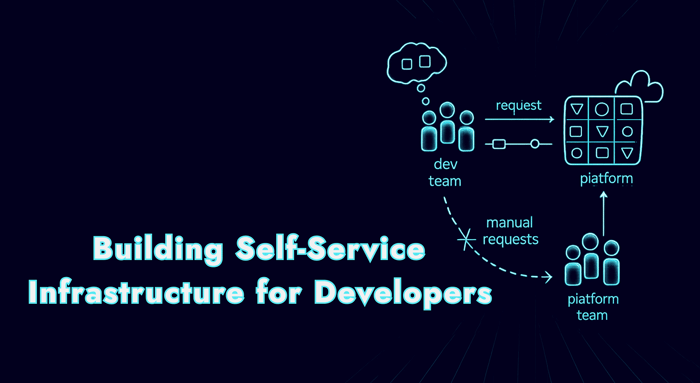Table of Contents
A comprehensive guide to evolving from automation to intelligent, autonomous agents that adapt, learn, and act in complex environments.
Introduction
Every significant wave of technology has transformed how organizations create value. In the industrial era, mechanical automation made physical labor more efficient. Then came the IT revolution, which introduced software-driven automation, allowing businesses to establish predictable workflows at a larger scale. Now, we find ourselves on the edge of a new era, “the Agentic Era”, where AI-powered systems are set to leap forward. These systems are not just following fixed scripts; they are beginning to operate with a level of autonomy, adaptability, and judgment that is closer to how skilled, high-agency employees function.
Unlike traditional automation, which is all about executing predefined rules with consistent outcomes, AI agents can interpret their surroundings, make informed decisions, and learn from every interaction. Their behavior is dynamic and adaptive, akin to talented employees who navigate challenges when empowered with clear strategic goals instead of detailed step-by-step instructions. Just as leaders provide objectives, boundaries, and metrics for their teams, organizations will have to adopt a similar approach when it comes to managing digital labor on a machine scale.
This shift redefines what business value looks like. While automation focused on improving efficiency by cutting costs and minimizing errors, these intelligent agents will bring a new level of adaptability. They will help organizations better handle uncertainty, quickly seize opportunities, and dynamically adjust their operations to meet changing conditions.
In this article, we will explore the emergence of the Agentic Era: what agentic AI really means, how it goes beyond simple automation, and what implications it has for leaders and businesses. We’ll look at the foundational elements of these intelligent systems, their potential applications, the governance models needed to manage them ethically, and the various stages of adoption from specialized agents to a fully orchestrated enterprise.
Welcome to the next chapter of digital transformation: the rise of autonomous, agentic systems.
Understanding Agents vs. Automation
For many years, when we talked about automation, we often thought of it in a very structured way. In the IT world, automation typically means following a set routine—think of things like continuous integration and deployment, organizing tickets, or managing infrastructure. These systems are great at being efficient, consistent, and scalable. However, they struggle when things don’t go according to plan. If something changes that isn’t covered by their preset instructions, they usually fail or need someone to step in and fix it.
Now, we’re entering what might be called the Agentic Era, which brings a fresh perspective to automation with the concept of agents. These agents are powered by AI and can actively sense what’s happening around them, interpret different situations, make decisions, and take actions to reach their goals. Unlike traditional automation, which simply linearly executes tasks, agents work in a more dynamic way. They learn from feedback and adapt their methods over time, allowing them to be much more flexible in ever-changing environments.
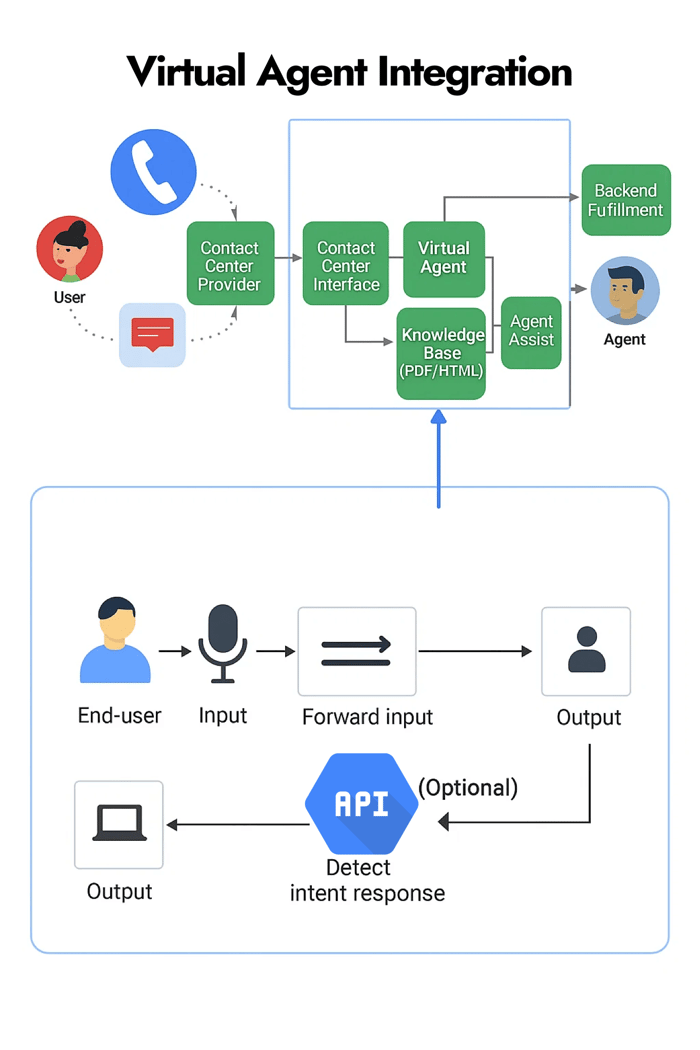
Key differentiators include:
Context Awareness: Agents integrate multiple signals, structured data, unstructured text, and real-time feedback to inform their actions.
Adaptability: They learn from successes and failures, adjusting behavior dynamically.
Goal-Orientation: Rather than following rigid rules, agents pursue defined objectives within boundaries.
We’ve seen some interesting developments in how technology interacts with us. For instance, consider the simple chatbots we encounter; they respond to our questions and prompts, acting like reactive agents. Then there are goal-based and utility-based agents, like the recommendation systems we see on streaming services. They work to choose the best possible options to enhance our experience.
On a more advanced level, learning agents, particularly those using reinforcement learning, are continuously evolving. Now, with generative AI, we’re witnessing agents that can create new content, strategies, and solutions, taking their independence to new heights.
For business leaders, understanding these distinctions is crucial. While traditional automation focuses on streamlining repetitive tasks, these intelligent agents are all about scaling decisions and enhancing adaptability. This shift from following rigid workflows to systems that can make thoughtful choices on their own is a game-changer. It's important to grasp this evolution as we navigate the future of work.
Core Capabilities of Intelligent Agents
Intelligent agents are a step beyond regular automation; they're like smart systems that can sense what's happening around them, think things through, take action, and work together with others, even in ever-changing situations. What really sets them apart isn’t just their ability to perform tasks, but their knack for understanding the context, making choices, and learning to adapt over time. To truly grasp how these agents go beyond the limits of traditional automation, it’s helpful to explore their essential capabilities.
Capability | Description | Business Impact |
Perception | Collecting and interpreting data from diverse inputs such as IoT sensors, system logs, APIs, or human prompts. | Provides situational awareness, enabling agents to respond to real-time conditions rather than static rules. |
Reasoning | Using AI/ML models, rules, and probabilistic methods to analyze context, predict outcomes, and select strategies. | Enables adaptive decision-making and optimizes performance under uncertainty. |
Action | Executing tasks in dynamic digital or physical environments, e.g., scaling cloud infrastructure, generating code, or moving a robot arm. | Turns decisions into tangible outcomes, automating not just thinking but doing. |
Collaboration | Communicating with humans, other agents, or systems through APIs, chat interfaces, or orchestration frameworks. | Facilitates teamwork, knowledge sharing, and multi-agent coordination at enterprise scale. |
These capabilities build upon one another: perception provides raw input, reasoning interprets it, action executes on chosen strategies, and collaboration ensures alignment with broader systems or teams. Taken together, they form the foundation of the agentic model, where digital entities behave less like static tools and more like dynamic teammates.
In enterprise contexts, this means agents can monitor infrastructure health, reason about anomalies, automatically remediate issues, and escalate to human operators only when necessary, all while coordinating with other agents. As capabilities mature, the scope of what agents can manage autonomously continues to expand.
Business Applications Across Sectors
The real potential of the Agentic Era isn't just about the technology itself; it's about the way it transforms different industries. By combining perception, reasoning, and action, agents can take on tasks that demand adaptability and judgment areas where traditional automation has struggled. We’re starting to see these agentic systems make a tangible difference in fields like finance, healthcare, and manufacturing, showing how they can effectively impact businesses in meaningful ways.
Sector | Application |
Finance | Autonomous trade monitoring, fraud detection, and real-time compliance checks. Reduces risk exposure, ensures adherence to regulations, and improves trust with regulators and customers. |
Healthcare | Adaptive clinical decision support, personalized treatment planning, and patient triage. Enhances accuracy of diagnoses, reduces clinician workload, and supports better patient outcomes. |
Manufacturing | Predictive maintenance of machinery, supply chain optimization, and quality control. Minimizes downtime, lowers operational costs, and improves throughput. |
Software Development | Self-updating codebases, automated bug resolution, and incident remediation. Accelerates release cycles, reduces errors, and frees engineers to focus on innovation. |
These examples illustrate how agents differ from automation. In finance, automation might flag unusual transactions, but an agent can adapt thresholds based on evolving market behavior. In healthcare, automation schedules tests, while agents analyze unstructured clinical notes and recommend next steps. In manufacturing, automation triggers alerts, but agents anticipate failures and autonomously reallocate supply. And in software development, agents go beyond CI/CD pipelines to self-heal incidents or propose refactors aligned with business objectives.
Across sectors, the common thread is adaptability. Agents don’t just execute; they interpret, learn, and act in ways that align with strategic goals. This positions them as digital colleagues rather than simple tools, unlocking new forms of enterprise resilience and agility.
Beyond Agents
Imagine a future where intelligent agents go beyond just carrying out tasks and instead operate as part of a system that runs independently. We're talking about technologies that can work together, adapt on the fly, and get better over time without needing constant oversight from a human. To make this vision a reality, we need to make progress in four key areas of technology:
Advanced Learning and Reasoning: When we think about how advanced agents learn and make decisions, they usually depend on large language models (LLMs) to understand language and reinforcement learning techniques to optimize their choices. Recently, there’s been some exciting progress with new approaches that blend formal logic with deep learning, known as neuro-symbolic AI, along with self-play reinforcement learning. This combination helps agents to gain specialized skills in specific areas.
For instance, methods like Proximal Policy Optimization (PPO) and Deep Q-Networks (DQNs) are being tweaked for use in multi-agent simulations, where the strategies used can change and evolve. This evolution allows for richer, more dynamic interactions among agents, leading to smarter decision-making.Multi-Agent Orchestration Frameworks: Today, managing interactions between multiple agents often involves platforms like LangChain, AutoGen, and CrewAI. However, we're moving towards a future where these agents can autonomously negotiate with each other. This means they'll create agreements, distribute resources, and enforce rules on their own, much like how smart contracts work in blockchain systems. In this new approach, we'll rely on decentralized methods like gossip protocols and distributed consensus to support strong and resilient networks of agents.
Persistent Memory and Context Fusion: When we talk about persistent memory and context fusion, it's about creating smarter systems that remember important information over the long haul. Instead of just relying on short bursts of memory from one session to the next, we can use advanced tools like vector databases, think Pinecone, Weaviate, and Milvus and knowledge graphs to help these systems anchor themselves in a broader context.
When these technologies work together with retrieval-augmented generation (RAG), they empower agents to keep track of what they’ve learned and provide continuity, no matter if they’re handling different tasks, working in various organizations, or even moving between industries. This means that the systems can adapt and evolve, providing a more seamless and integrated experience.Infrastructure and Tooling Evolution: The way we build and manage technology is changing rapidly, especially with the rise of cloud-native platforms tailored for agent workloads. Tools like Kubernetes are becoming essential, allowing agents to easily set up and control their infrastructure. In addition, service meshes, such as Istio and Linkerd, are stepping in to ensure that communication between agents is both secure and speedy.
On the monitoring side, observability tools like Prometheus and OpenTelemetry are being enhanced to keep an eye not only on system performance but also on how agents make decisions and reason through problems. It's an exciting time for technology as these advancements help create more efficient and intelligent systems.
The relevance is clear: the future isn't just about more advanced bots; it's about creating systems that can learn and adapt on their own. These autonomous systems will be able to work together seamlessly and improve themselves across various environments. This shift will be crucial for businesses as they move from using individual AI tools to building integrated digital ecosystems that connect everything.
Governance, Trust, and Ethics
As intelligent agents become an essential part of our business processes, their success will depend on more than just how well they function technically. Trust is key; it's what will shape the relationship between companies, regulators, customers, and employees. Whether these systems are welcomed or met with skepticism will largely depend on how effectively we address governance, transparency, and ethics alongside technological advancements.
Unlike traditional automated systems that follow strict rules, these agentic systems can adapt and make unpredictable choices. This brings up important questions about accountability. For example, how do we explain a loan application denial or a shift in supply chain orders made by an agent? To maintain trust and ensure clarity, we need transparent records, AI models that are easy to understand, and thorough audit trails.
These agents must operate within well-defined limits. We can achieve this by implementing measures like role-based permissions, policies coded into their operation, and automated fail-safes that ensure human oversight when necessary. Such steps can help agents work independently while still protecting compliance, safety, and the company’s reputation.
Industries like finance, healthcare, and defense face particular scrutiny. In finance, for instance, regulators expect clear proof that rules are being followed, so it’s vital that autonomous trading agents can be audited. In healthcare, decision-making support systems must adhere to privacy laws, such as HIPAA and GDPR, and uphold medical accountability standards. In defense, we need ethical guidelines to prevent the misuse of technology in sensitive areas, like autonomous weapons.
Going forward, governance models must balance technical measures like AI safety tools and monitoring with organizational oversight through boards, risk committees, and compliance teams. The goal isn’t to eliminate autonomy; rather, it's to ensure it’s exercised responsibly. This way, agents can enhance human capabilities without diminishing accountability.
In the Agentic Era, trust will be the currency of adoption. Companies that weave transparency, safety guidelines, and ethical considerations into their strategies for these intelligent systems will lead the way in fostering safe and innovative practices.
Challenges and Risks
The promise of the Agentic Era brings exciting opportunities, but it also comes with some significant risks that we need to be aware of and manage. One major concern is the potential for over-reliance on these agents without sufficient oversight. If we hand over too much decision-making power to autonomous systems, we might overlook critical details, especially when people step back from reviewing important processes. It's crucial that these agents enhance our judgment rather than take accountability away from us.
Another challenge we face is data privacy and bias. Agents rely on large amounts of data, both structured and unstructured, to make their decisions. If this data is biased or not handled correctly, it could lead to outcomes that reinforce existing inequalities or even expose organizations to regulatory issues. That's why having strong data governance and regular fairness audits is so important.
We also need to think about the complexities involved in understanding the unpredictable behaviors that can emerge from these agents. Unlike traditional automation, which usually follows a set path, agents can adapt in unforeseen ways. This unpredictability makes it tough to pinpoint the root causes of issues and raises the chances of unintended consequences. To navigate this, we’ll need effective tools for monitoring, testing, and simulating how agents behave to ensure safety as we scale up.
In summary, while the adaptability, autonomy, and learning capabilities of these agents can be powerful, they also introduce new challenges. Finding the right balance between innovation and oversight is essential to maintaining trust as we move forward.
Conclusion
Traditional automation optimized for efficiency by executing predefined scripts; intelligent agents extend this by operating with context, judgment, and adaptability. This evolution positions agents not as tools that follow instructions but as collaborators capable of independent decision-making at machine scale.
Looking forward, the landscape will extend beyond single agents toward multi-agent ecosystems of digital entities that collaborate, negotiate, and self-organize across domains. In time, these systems will resemble distributed digital workforces, capable of coordinating tasks dynamically, reallocating resources, and adapting strategies in real time. Such a shift holds the potential to transform enterprise operations as deeply as the internet once did.
For organizations, the path forward is not wholesale replacement but phased adoption. Start with targeted use cases where agents augment existing teams, validate value through measurable outcomes, and then expand into broader orchestration. By balancing innovation with governance and trust, enterprises can harness the potential of the Agentic Era responsibly.
The future belongs to those who embrace agents not just for efficiency, but for adaptability, the defining advantage of the next digital era.
Akava would love to help your organization adapt, evolve and innovate your modernization initiatives. If you’re looking to discuss, strategize or implement any of these processes, reach out to [email protected] and reference this post.

